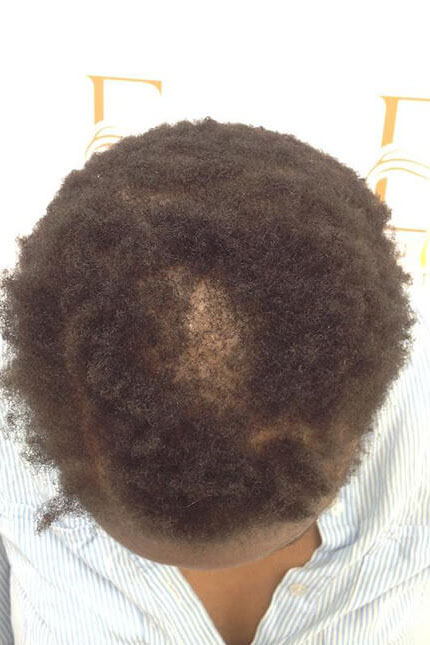Platelet-Rich Plasma (PRP) Therapy
At Derma Skin Clinic, we are committed to helping you achieve youthful, glowing skin and healthier hair with the power of Platelet-Rich Plasma (PRP) Therapy. This natural and effective treatment delivers remarkable results with minimal risk and downtime. Whether you’re looking to reduce fine lines, restore your hair, or rejuvenate your skin, PRP therapy can help you achieve your goals. Contact us today to schedule your consultation and discover how PRP therapy can work for you.

Platelet-Rich Plasma (PRP) Therapy at Derma Skin Clinic
At Derma Skin Clinic in Kampala, we offer Platelet-Rich Plasma (PRP) Therapy, a revolutionary, non-invasive treatment that harnesses the power of your own blood to promote skin rejuvenation and healing. Whether you’re looking to reduce fine lines, improve skin texture, or enhance hair growth, PRP therapy can provide long-lasting, natural results with minimal downtime.
What is Platelet-Rich Plasma (PRP) Therapy?
PRP therapy is a cutting-edge treatment that uses the healing properties of your own blood to rejuvenate and repair skin. Blood is drawn from your body, processed to concentrate the platelets, and then re-injected into targeted areas to stimulate collagen production and accelerate tissue repair. This process encourages the regeneration of healthy skin cells, improving texture, tone, and overall appearance.
PRP is often referred to as the “vampire facial” when used on the face because of the way it revitalizes skin. It’s also commonly used for hair restoration, offering an effective, natural solution to combat hair thinning or loss.
Benefits of PRP Therapy
- Skin Rejuvenation: Stimulates collagen and elastin production, improving skin elasticity, texture, and tone.
- Reduces Fine Lines and Wrinkles: PRP can significantly reduce the appearance of fine lines, crow’s feet, and nasolabial folds.
- Improves Skin Texture and Tone: Helps to smooth out rough skin texture and evening out skin tone for a glowing complexion.
- Natural Skin Renewal: Using your own blood means there’s minimal risk of allergic reactions, making PRP a natural and safe option.
- Hair Restoration: Stimulates hair follicles and promotes hair regrowth, making it ideal for those suffering from hair thinning or loss.
- Minimal Downtime: Most patients experience little to no downtime, allowing them to return to their daily activities quickly.
- Long-Lasting Results: PRP provides gradual but long-lasting results that improve over time as collagen production continues.
How PRP Therapy Works
- Blood Draw: A small amount of blood is drawn from your arm, similar to a standard blood test.
- Platelet Separation: The blood is processed in a centrifuge, separating the platelets from the red and white blood cells. This creates a concentrated platelet solution.
- PRP Injection: The PRP is carefully injected into the target area (face, scalp, or body), where it stimulates the healing and regeneration process.
- Collagen and Cell Regeneration: The platelets release growth factors that stimulate collagen and elastin production, encouraging the skin or scalp to repair and regenerate naturally.
Common Areas for PRP Treatment
Facial Rejuvenation
PRP therapy is highly effective for improving skin texture, reducing fine lines, and promoting a youthful, glowing appearance. It can be applied to various areas of the face, including under the eyes, around the mouth, and on the forehead.Hair Restoration
PRP can be used to treat thinning or receding hair by injecting concentrated platelets into the scalp. This stimulates dormant hair follicles, promoting hair growth and improving hair thickness.Neck and Décolletage
PRP therapy can be used to treat wrinkles and crepey skin on the neck and chest, restoring smoother, more youthful skin in these areas.Acne Scars
PRP is effective in reducing the appearance of acne scars by stimulating collagen production and encouraging skin regeneration.
Why Choose Derma Skin Clinic for PRP Therapy?
- Expert Practitioners: Our team of licensed professionals is highly trained in PRP therapy to ensure optimal and natural-looking results.
- Customized Treatments: We personalize each PRP session based on your skin or hair goals, ensuring you receive the best possible care.
- Advanced Equipment: At Derma Skin Clinic, we use the latest technology and equipment to process and administer PRP for safe and effective results.
- Safe and Natural: Since PRP uses your own blood, there is minimal risk of adverse reactions, making it a safe and natural treatment option.
The PRP Therapy Process
- Consultation: During your initial consultation, our experts will discuss your skin or hair concerns, goals, and medical history. We’ll determine if PRP therapy is the right treatment for you.
- Preparation: Blood will be drawn and processed in our clinic to separate the platelets.
- PRP Injection: The concentrated PRP is then carefully injected into the areas of concern, whether it’s your face, scalp, or body.
- Recovery: Most patients experience minimal discomfort and no downtime. You may notice slight redness or swelling in the treated area, which resolves within a few hours.
- Results: Visible improvement begins within a few weeks, with continued improvement over several months as collagen production increases. Results last for several months, and maintenance treatments are recommended for long-term benefits.
Ready for Rejuvenation?
At Derma Skin Clinic, we are committed to helping you achieve youthful, glowing skin and healthier hair with the power of Platelet-Rich Plasma (PRP) Therapy. This natural and effective treatment delivers remarkable results with minimal risk and downtime. Whether you’re looking to reduce fine lines, restore your hair, or rejuvenate your skin, PRP therapy can help you achieve your goals. Contact us today to schedule your consultation and discover how PRP therapy can work for you.

